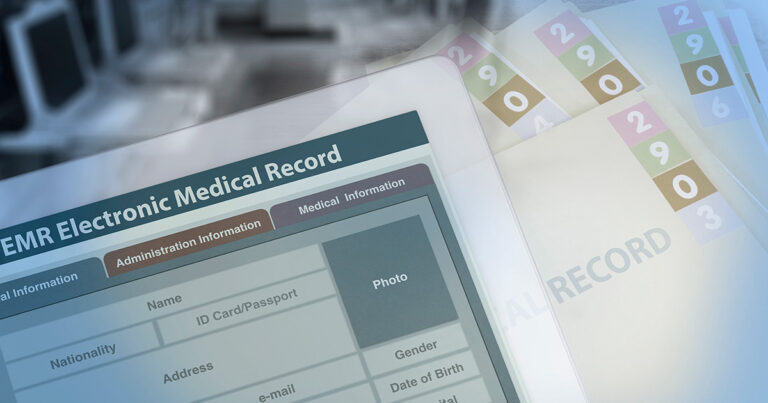Writing a mission statement for your healthcare practice
Whether you’ve officially written and promoted one or not, your practice has a mission. Perhaps you want to empower patients to develop sustainable eating habits. Maybe you’re providing counseling and hope for families in crisis. Or perhaps you’ve committed your work to helping injured athletes get back on the field or the court. In any case, you started your practice for a reason.
Now, it’s time to clarify that reason and condense your values, purpose and passion into one cohesive mission statement.
So exactly what is a mission statement?
Your mission statement is a formal declaration of why you started your company, and what you value. For example, Google’s mission statement is “To organize the world’s information and make it universally accessible and useful.” Tesla’s mission statement is “To accelerate the world’s transition to sustainable energy.” And Uber’s mission statement is “We ignite opportunity by setting the world in motion.”
These simple, clear and powerful phrases let the reader immediately know what the company is about, and where they’re going. But a mission statement is about more than bragging rights; it also:
- Keeps your company aligned with its core values
- Unites all team members under an umbrella of purpose
- Captivates potential clients and customers by presenting a clear benefit
Ultimately, a mission statement helps any company — including a private healthcare practice like yours — define their own journey….and shows current and potential staff and patients alike what to expect.
How to write your own mission statement
Writing a mission statement may seem like a simple task…that is, until you sit down to actually do it. The truth is, crafting a single phrase that captures the heart of your business takes some deep thought, a bit of brainstorming and careful strategy.
Here are some questions to ask yourself to help you hone in on a clear, cohesive mission statement:
Identify your values
Your mission statement won’t necessarily dive into the specifics of what you do (for example, develop weekly nutrition plans, make regular chiropractic adjustments, etc.). Instead, it will take a high-level approach to the mission of your practice. To step back far enough to get that bird’s eye view, you’ll want to identify your values.
One productive strategy for identifying the values of your practice is to ask yourself what your top priorities are when it comes to serving your customer base. Do you want to make your patients feel seen and heard? Are you committed to restoring holistic balance? Or is your primary role to offer compassion?
Make a list of 3 to 5 values that communicate why you started your business and what you want to offer to patients. This list will be the foundation to your mission statement.
Hone in on your long-term vision
Take a moment to think about the future of your practice. Where would you like to be in 5 years? 10? 20?? When Google began in 1996, it was just a research project by two very smart guys at Stanford. They hadn’t yet “organized the world’s information” or made it “universally accessible and useful.” And yet, that’s what their mission statement claims. Fast-forward nearly 25 years and Google has, in fact, transformed the global landscape of how we communicate, learn and exchange information.
Crowdsource
Ask your employees and office staff what they feel about your values, your mission and your future as a healthcare practice. Not only will they offer unique perspectives that can help you craft a better statement, but they’ll appreciate the fact that you value their input.
Write it out
Now, it’s time for a little wordsmithing. This is the challenging part: capturing your heart and purpose in just a few words. Let’s face it: short is hard!
First, choose a powerful verb that tells the reader how you achieve your purpose. Here are some examples of verbs that you might use for a mission statement:
- Provide
- Educate
- Deliver
- Create
- Heal
- Restore
- Renew
- Build
As you might notice, most of these verbs are “others-focused” — they communicate an action performed for others.
Then think through your core audience. Your practice may have a more general audience — such as your community at large, or even your entire city or state. Or you might have a more-targeted patient base, such as the elderly, low-income families, children,or patients with a specific type of chronic illness.
In any case, you’ll want to pair your verb with an object and your target audience. For example, you might be committed to:
- Providing compassionate care to the elderly
- Educating the community on mental wellness
- Building a healthier tomorrow for today’s youth
Finally, don’t be afraid of using metaphorical or figurative language to make your point. Phrases such as “heart,” “helping hand” and “soul” communicate that you’re an others-focused practice without getting too specific.
Brainstorm ideas
Now, for brainstorming: Write out as many ideas as you can for your mission statement. Don’t worry if, upon reflection, some of the ideas very good. Write them down anyway. Ask your employees for ideas as well, and see what they think of your own.
By the end, you should have 10 to 20 statements to filter, tweak and revise. Give your top five ideas some time to “marinate” and revisit them after a few days. Then say them out loud. Which one sounds the most clear and powerful? Which one gets to the heart of why you started your practice? Which one grabs your attention? That’s your new mission statement — a statement of purpose that communicates to others why you do what you do.
Promote your mission statement
You’ve done the hard work of crafting your statement; now, think about creative ways you can advertise your mission statement so your existing patients, employees and new potential clients know what you’re all about.
Your mission statement should be clear and visible on all of the following:
- Your website
- Any paper marketing material, including brochures, handouts and your business card
- Somewhere in the interior of your office
- Training guides and protocol used for practice administration
- Your social media accounts
- Your email marketing campaigns
- Your intake forms (which we’ll talk more about in a second)
Finally, incorporate your mission statement into team meetings, one-on-one trainings and new patient on-boarding. Your team and patients should hear — as well as read — your statement. Repeating your mission statement (when it makes sense to do so) will help get everyone excited and ready to work hard, deliver amazing care, and reach more patients.
Free Download: 6 Examples of Powerful Mission Statements.
Customize your content
As mentioned above, customizing your content, including your intake forms, can be a powerful way to promote your mission statement and educate new and existing patients on your values and vision. intakeQ™ is an electronic paperwork platform that empowers you to customize your own digital intake forms, including patient on-boarding forms, questionnaires and release forms.
This powerful tool will also enable you to create a more-customized, patient-friendly experience with:
- Convenient, time-saving online scheduling
- Personalized patient portals and private patient-to-provider messaging
- Text-messaging appointment reminders to decrease no-shows
- Patient surveys to give you greater insight into patient satisfaction and loyalty
Get started today with a free 14-day trial of intakeQ’s online forms capabilities and our integrated practiceQ™ practice-management solution. No credit card is required!






